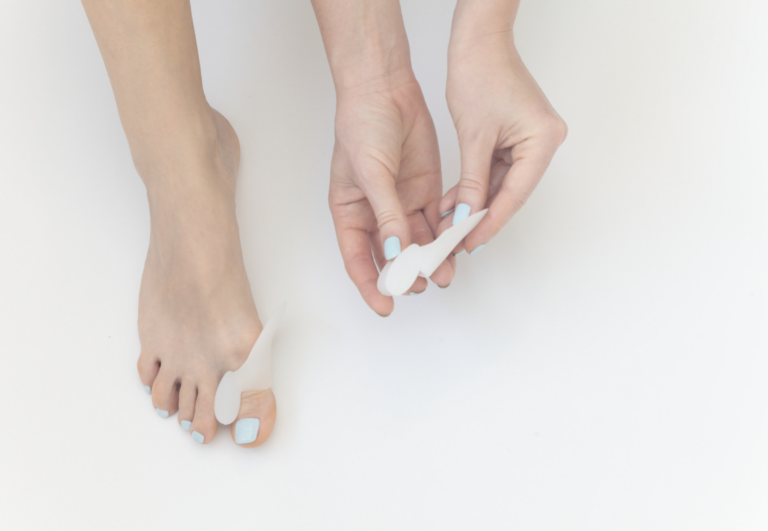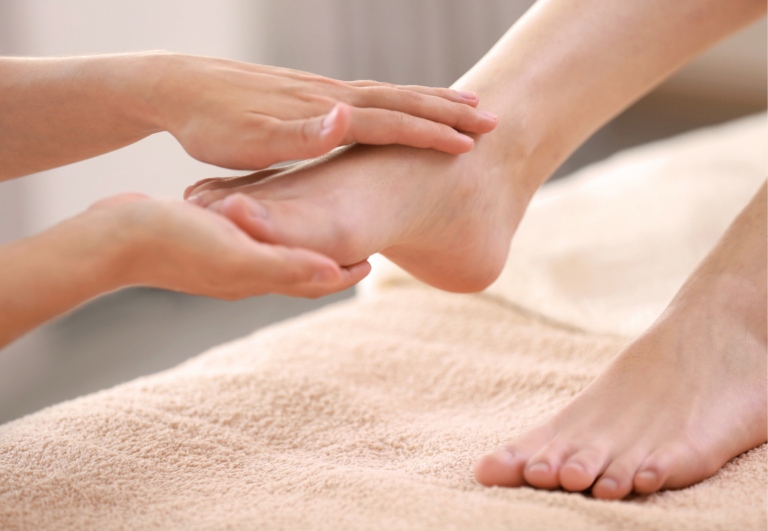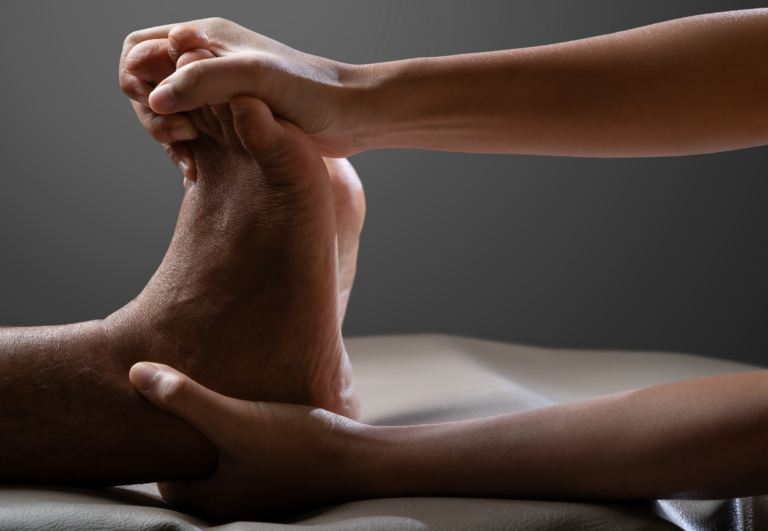How Can Toe Spacers Benefit People with Diabetes? Understanding the Podiatric Advantages
Toe spacers, often overlooked in foot care, can be particularly beneficial for people with diabetes. As a toe spacer enthusiast, I understand the importance of maintaining good foot health, especially when dealing with diabetes. By aligning the toes to their natural position, these simple devices promote better circulation, which is crucial for diabetic patients who face challenges with reduced blood flow to the feet.
I’ve found toe spacers to be a valuable tool in preventing common diabetic foot complications. They can alleviate pressure caused by toe deformities and reduce the risk of blisters, corns, and calluses that can lead to more serious infections. It’s essential to carefully manage these risks, as healing can be slower in diabetic individuals due to their condition’s impact on the body’s natural repair processes. Providing both comfort and preventive care, toe spacers are a practical addition to diabetic foot care regimens, ensuring that patients can maintain an active lifestyle with minimized discomfort.
Diabetes and Its Impact on Foot Health
I’ve seen that managing diabetes effectively is crucial for maintaining overall health, and this includes foot health. High blood sugar levels, common in diabetes, can lead to circulatory and nerve damage. This damage can manifest in the feet as neuropathy, which can cause tingling, pain, weakness, or even loss of feeling.
Peripheral vascular disease, another consequence of diabetes, hinders blood flow to the feet, making it hard for infections or injuries to heal. The combination of these conditions increases the risk of foot complications such as ulcers, infections, and at times, may lead to amputation.
Tips for Foot Health in Diabetes:
- Examine your feet daily: Look for blisters, cuts, cracks, or sores.
- Keep your feet clean and dry: This helps to prevent infections.
- Control blood sugar levels: Reduces the risk of diabetic neuropathy.
- Wear well-fitting shoes: Prevents blisters and calluses.
- Never walk barefoot: Minimizes the chance of foot injuries.
From my experience with toe spacers, they can be a simple yet useful tool for people with diabetes. They can help in aligning toes and reducing the pressure on any one point of the foot, potentially reducing the risk of foot deformities and complications. However, never underestimate the seriousness of diabetic foot problems, and always consult healthcare professionals for personalized care.

The Role of Toe Spacers in Diabetes Foot Care
Toe spacers are an integral part of a comprehensive foot care approach for those with diabetes. They aim to mitigate common issues such as toe deformities and improve overall foot health, which is crucial due to the increased risk of foot-related complications in diabetics.
Prevention of Toe Deformities
Bunions and hammertoes are common deformities that I often see. Toe spacers can help realign the toes into a more natural position, reducing the risk of these deformities worsening over time.
Improvement of Blood Flow and Nerve Function
Good blood flow and nerve function are vital for diabetic patients to avoid complications like neuropathy, which can cause numbness or tingling. By creating space between the toes, toe spacers can enhance circulation, promoting better nerve function and health.
Reduction in Skin Problems and Infection Risks
Diabetics are more susceptible to skin issues like calluses, blisters, and ulcers. By using toe spacers, the toes are less likely to rub against each other or the footwear, which can prevent sores and cuts, limiting the risk of infection.
Support and Comfort During Daily Activities
Comfort is paramount for diabetic patients when performing daily activities. Toe spacers made from materials like foam, gel, or silicone can provide cushioning and reduce pressure points, contributing to a pain-free experience whether barefoot or in footwear.
Enhanced Footwear Fit and Protection Against Injury
Wearing well-fitting socks and shoes is essential for protecting diabetic feet. Toe spacers can improve how shoes fit, reducing friction and the chance of injury. This is particularly true for shoes that may otherwise be tight around the toe area.
Usage in Treatment and Rehabilitation
In conjunction with advice from a healthcare provider, toe spacers can be part of a treatment plan for foot ailments. I’ve seen them used to assist in the rehabilitation of foot conditions, providing stability and support as a supplement to medical care.
Choosing the Right Toe Spacers for Diabetes Management
When selecting toe spacers to help manage diabetes-related foot issues, comfort and material are key. Silicone toe spacers are a great option due to their durability and flexibility. Unlike foam or gel, silicone maintains its shape over time and avoids the quick wear-out often seen in less sturdy materials.
Gel toe spacers can provide a cooling effect which might be soothing for swollen feet, a common symptom in diabetes. They often come in various sizes, catering to individual needs and ensuring a better fit for different toe gaps.
To enhance quality of life, diabetic patients should look for toe spacers that are easy to clean, as hygiene is crucial to prevent infections. I recommend opting for washable and hypoallergenic materials.
| Material | Benefits | Considerations |
|---|---|---|
| Silicone | Durable, flexible, hypoallergenic | May be more expensive |
| Gel | Cooling effect, cushioning | May wear out faster |
| Foam | Soft, lightweight | Least durable, may not be hygienic |
Remember, while toe spacers can aid in improving comfort, they should be part of a larger foot care routine, especially for those with diabetes. It’s important to consult a healthcare professional to ensure they fit into your overall diabetes management plan.
Daily Practices to Complement the Use of Toe Spacers
Incorporating toe spacers into my daily routine has greatly benefited my foot comfort and health. Here are some simple yet effective practices I follow alongside using toe spacers that might benefit others, especially those with diabetes seeking extra care for their feet.
Morning Care:
- Cleanliness: I always start by cleaning my feet thoroughly to prevent infections.
- Moisturizing: Applying a diabetic-friendly moisturizer helps keep the skin supple without increasing the risk of fungal infections.
Throughout the Day:
- Walking: Frequent short walks help improve circulation and can be done comfortably with toe spacers.
- Orthotics: If prescribed, I ensure to use orthotic insoles to support my foot’s natural structure.
Exercising:
- Strength Exercises: Simple toe curls and marble pick-ups to strengthen foot muscles.
- Flexibility: Regular stretching exercises help maintain foot flexibility.
Evening Routine:
- Relaxation: Elevate feet to reduce swelling; toe spacers can be worn during this period.
- Inspection: I always check for blisters or sores since foot injuries can go unnoticed with diabetes.
Cleaning Toe Spacers:
- Hygiene: Regularly cleaning toe spacers ensures they remain hygienic for daily use.
Before Bed:
- Comfort: Wearing toe spacers for a short period before sleep can help realign my toes after a day of stress.
Keeping these practices consistent has played a vital role in managing my foot health. I’ve found that combining these daily practices with the use of toe spacers significantly aids in maintaining overall foot comfort and health.
Professional Medical Advice and Care
When considering toe spacers for diabetic foot care, it’s crucial to seek professional medical advice to prevent complications such as amputation and infection. Consultation with healthcare providers ensures personalized care tailored to individual health needs.
Consulting with Health Care Providers
Who to Consult:
- Primary Care Physician: The first point of contact, who can help with initial assessment and refer to specialists.
- Podiatrist: A specialist in foot care, particularly important for those with polyneuropathy and risk of foot deformities.
- Diabetes Specialist: For overall diabetes management, which directly impacts foot health.
Why Consult Them:
- Personalized Advice: Each case of diabetes is unique, and foot care strategies must be personalized.
- Preventative Strategies: Proactive steps can be advised to minimize the risk of ulcers and nerve damage.
- Fitting of Toe Spacers: Ensuring proper sizing of toe spacers to avoid injury and complications.
Monitoring and Managing Potential Complications
Complications to Monitor:
- Ulcers: Breaks in skin that can lead to serious infection if not managed promptly.
- Calluses and Corns: Can indicate areas of high pressure which may need professional attention to prevent progression to ulcers.
- Nerve Damage: Can cause changes in sensation, leading to undetected wounds.
When to Seek Immediate Help:
- Signs of Infection: Redness, warmth, or pus around a toe spacer indicates a need for immediate medical attention.
- Worsening Pain: May signify injury or complications that require professional evaluation.
- Changes in Foot Shape: Sudden or gradual changes could indicate a developing deformity or complication.
Risk Management with Toe Spacers:
- Monitor for skin irritation or increased pressure points which could lead to ulcers.
- Use toe spacers as advised by the healthcare provider to avoid exacerbating existing conditions such as polyneuropathy.





